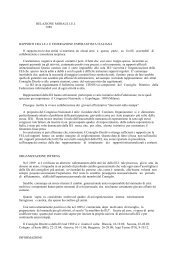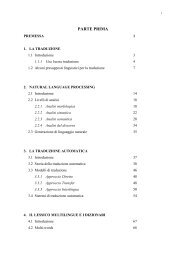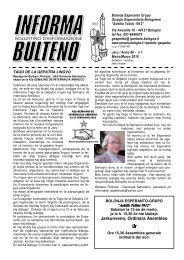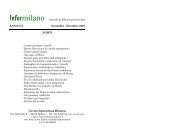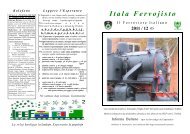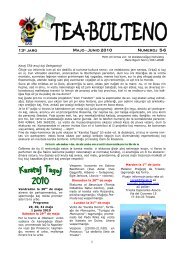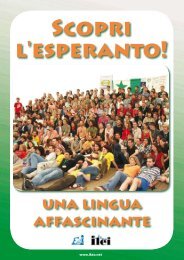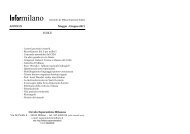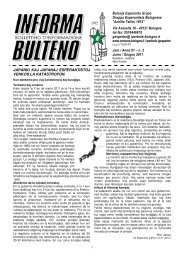Manuale di Esperanto (pdf) - Federazione Esperantista Italiana
Manuale di Esperanto (pdf) - Federazione Esperantista Italiana
Manuale di Esperanto (pdf) - Federazione Esperantista Italiana
You also want an ePaper? Increase the reach of your titles
YUMPU automatically turns print PDFs into web optimized ePapers that Google loves.
Bruno Migliorini <strong>Manuale</strong> <strong>di</strong> <strong>Esperanto</strong><br />
LEZIONE SESTA<br />
NUMERALI<br />
58. I numeri car<strong>di</strong>nali sono i seguenti:<br />
1 unu 4 kvar 7 sep 10 dek<br />
2 du 5 kvin 8 ok 100 cent<br />
3 tri 6 ses 9 naǔ 1000 mil<br />
Essi non prendono la desinenza dell'accusativo né quella del plurale.<br />
59. Le decine, le centinaia e le migliaia si formano premettendo a dek, cent, mil il<br />
numero car<strong>di</strong>nale necessario.<br />
Dudek 20 tricent 300 kvarmil 4000<br />
Okdek 80 naǔcent 900 sesmil 6000<br />
mi havas ducent eǔrojn ho duecento euro<br />
60. Gli altri numeri si formano facendo seguire alle decine, alle centinaia ed alle<br />
migliaia le unità del gruppo inferiore.<br />
Cioè:<br />
dek sep (o deksep) = 17 tricent kvardek ok = 348<br />
la monatoj estas dek du i mesi sono do<strong>di</strong>ci<br />
dudek = 2 x 10 tricent = 3 x 100<br />
dekdu = 10 + 2 cent tri = 100 + 3 14<br />
61. I numeri car<strong>di</strong>nali si possono far <strong>di</strong>ventare sostantivi coll'aggiunta della<br />
desinenza del sostantivo.<br />
unuo unità<br />
dekduo dozzina<br />
duo coppia<br />
milo migliaio<br />
54




